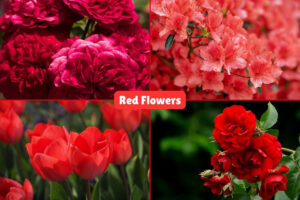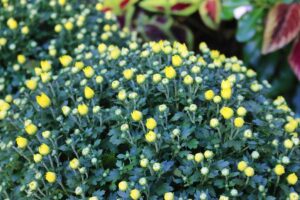This page may contain affiliate links. If you click and buy, we might get a small commission at no cost to you.
Spring is the perfect time to refresh your garden with vibrant, eye-catching blooms. Whether you’re a gardening pro or just starting out, these spring flowers to plant are easy to grow, bloom quickly, and will have your yard looking stunning in no time. From fragrant classics to colorful showstoppers, these flowers are guaranteed to turn heads and earn you some serious neighbor envy.
Spring Flowers to Plant
Spring is the perfect time to refresh your garden with vibrant, easy-to-grow flowers. Whether you’re new to gardening or a seasoned pro, choosing flowers that are simple to plant and bloom quickly can make all the difference. Below are 14 beautiful spring flowers to plant that are sure to bring color and life to your yard in no time.
1. Cosmos
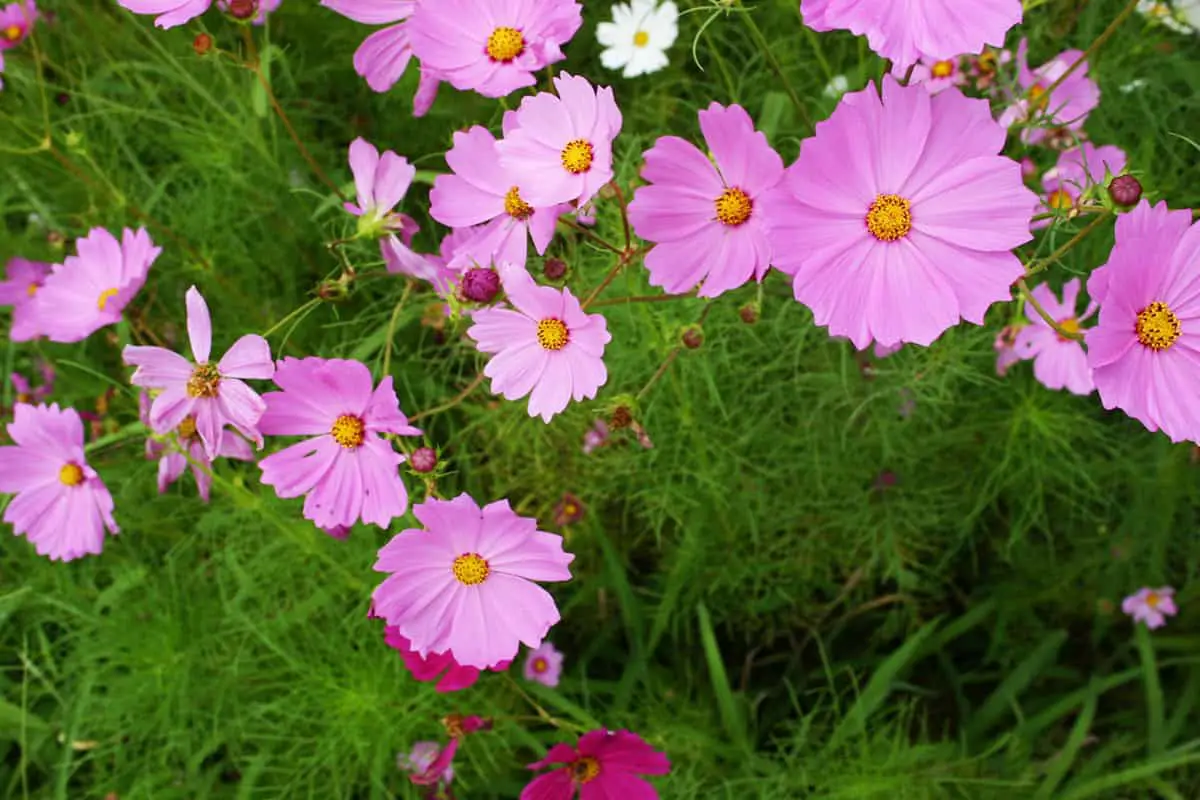
- Hardiness Zone: 2–11
- When to Plant: After the last frost in early spring.
- When They Bloom: Late spring through summer.
Cosmos are one of the easiest flowers to grow from seed. Sow the seeds directly into the soil in a sunny location after the danger of frost has passed. Cover lightly with soil, as they need some sunlight to germinate. They’ll sprout within 7–10 days and grow quickly, blooming in as little as 6–8 weeks. Cosmos thrive in average or even poor soil and require minimal watering once established. Deadheading spent flowers will encourage continuous blooms through the season. While cosmos bloom quickly, they often reach their peak in late spring to summer, making them a great choice for warmer regions with early frosts.
2. Pansies
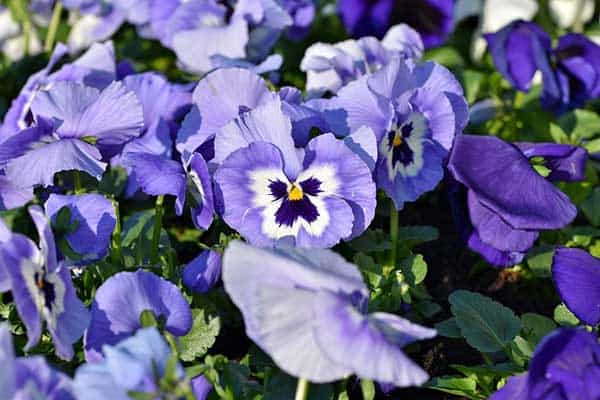
- Hardiness Zone: 4–8
- When to Plant: Early spring or fall for overwintering in mild climates.
- When They Bloom: Early to mid-spring.
Pansies are perfect for adding vibrant color to your garden early in the season. Transplant starter plants or sow seeds indoors 6–8 weeks before the last frost. If planting seeds directly, sprinkle them in loose, moist soil and keep them shaded until germination (usually 10–14 days). Pansies prefer cool temperatures and partial to full sun, thriving in rich, well-drained soil. Regular watering is essential to keep blooms looking fresh, and a layer of mulch can help retain moisture.
3. Tulips
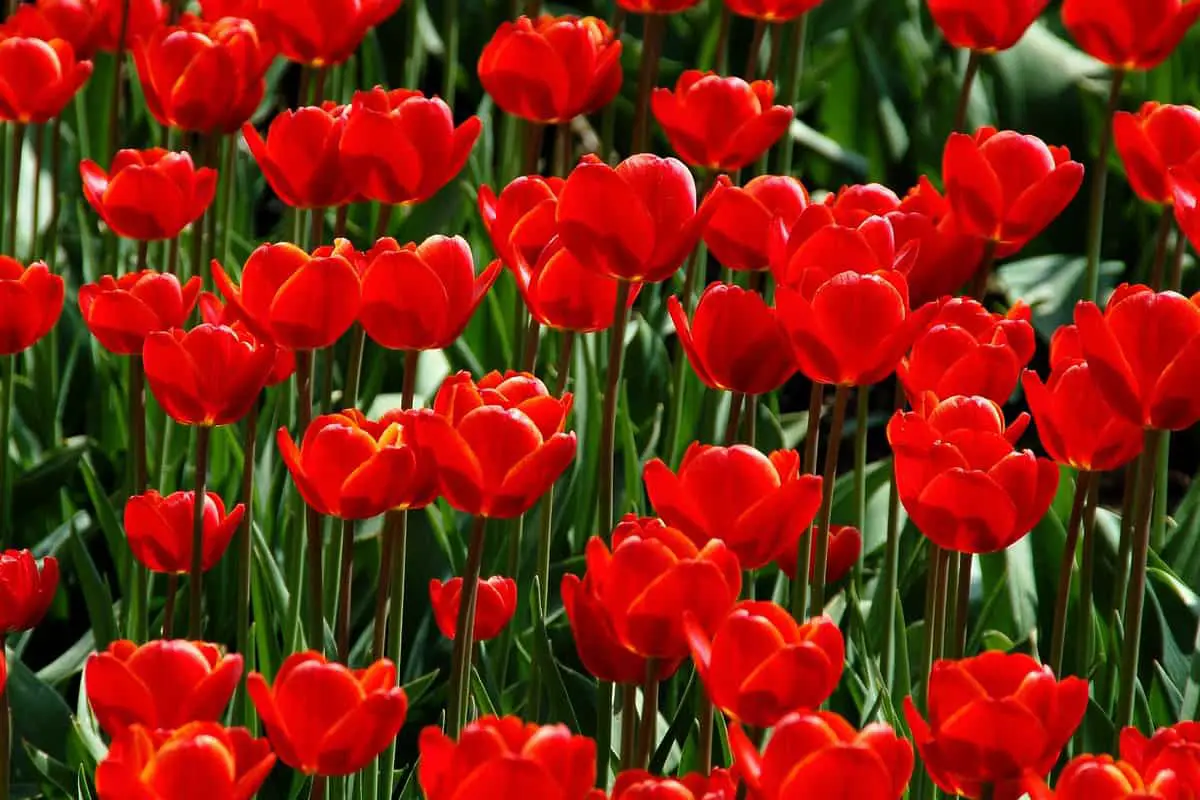
- Hardiness Zone: 3–8
- When to Plant: In fall, 6–8 weeks before the ground freezes.
- When They Bloom: Mid-to-late spring, depending on variety.
Tulips are a must-have for a classic spring garden. Plant bulbs in the fall, about 6 inches deep and 4–6 inches apart, with the pointed end facing up. Choose a sunny or partially shaded area with well-drained soil to prevent rot. Tulips need a chilling period to grow, so regions with cold winters are ideal. Once planted, they’ll stay dormant through winter and begin growing as the soil warms in spring. They don’t require much watering after planting, making them easy for gardeners of all levels.
4. Sweet Alyssum
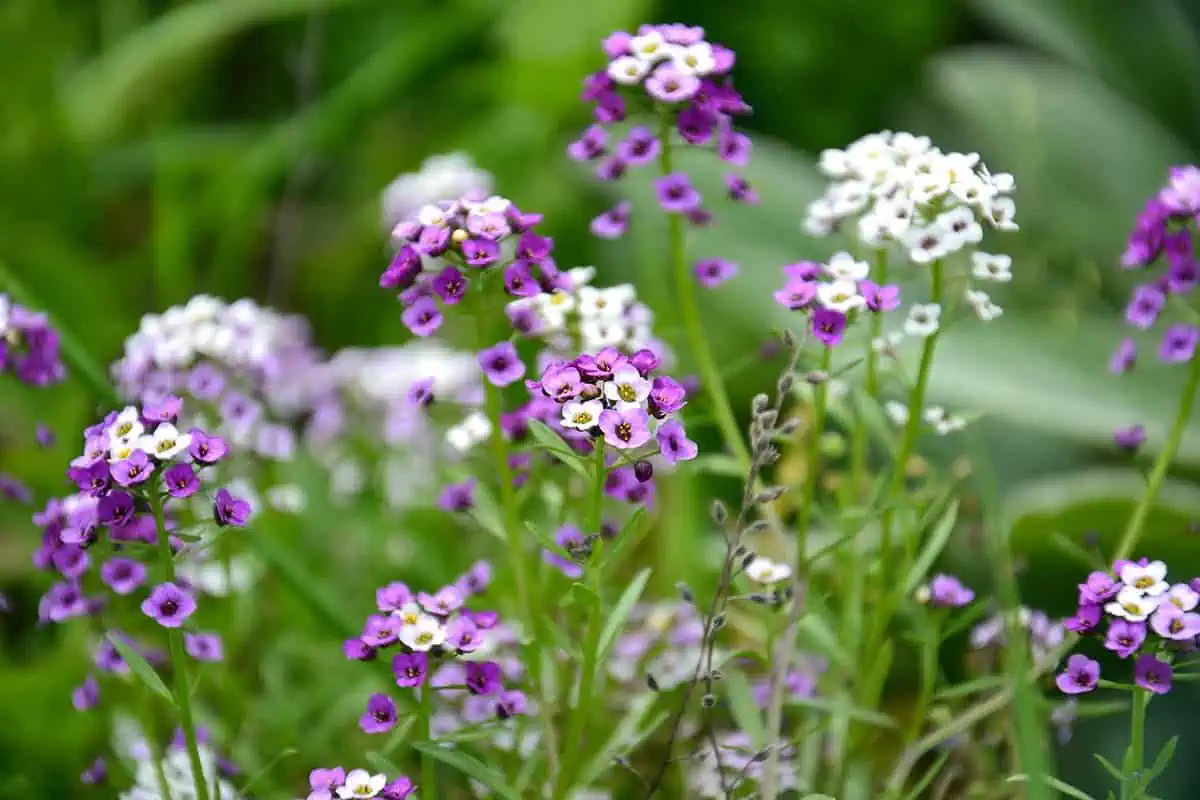
- Hardiness Zone: 5–9
- When to Plant: Early spring after the last frost.
- When They Bloom: Mid-to-late spring through early summer.
Sweet alyssum is a fast-growing flower that works beautifully as a ground cover or border plant. Sow seeds directly into the soil in early spring when the ground has warmed, or use transplants for quicker results. Scatter the seeds thinly and press them lightly into the soil without covering, as they need light to germinate. Keep the soil moist until the seeds sprout, which usually takes 7–10 days. Sweet alyssum thrives in full sun but tolerates partial shade, producing a dense carpet of tiny, fragrant blooms that last for weeks.
5. Zinnias

- Hardiness Zone: 3–10
- When to Plant: After the last frost in spring.
- When They Bloom: Late spring to early summer.
Zinnias are among the easiest flowers to grow, making them perfect for beginners. Sow seeds directly into warm, well-drained soil in a sunny spot after all frost danger has passed. Plant the seeds about ¼ inch deep and space them 6–12 inches apart, depending on the variety. Germination takes about 5–7 days, and blooms appear in as little as 4–6 weeks. Regular deadheading helps extend their bloom period, providing vibrant color all season long.
6. Marigolds
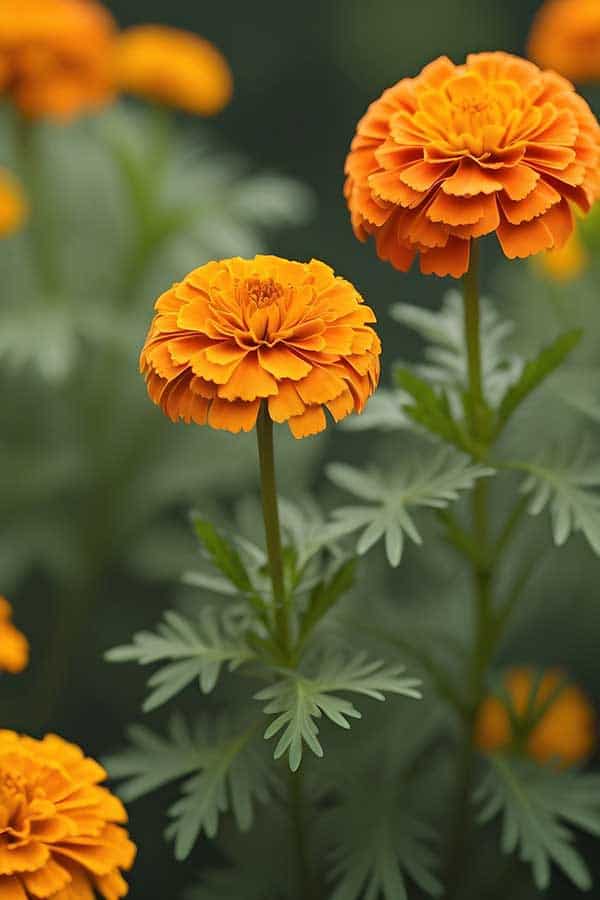
- Hardiness Zone: 2–11
- When to Plant: After the last frost in early spring.
- When They Bloom: Late spring through fall.
Marigolds are a reliable option for vibrant blooms and pest control in your garden. Plant seeds directly in sunny garden beds or containers after the last frost, spacing them 6–8 inches apart. Alternatively, use transplants for faster results. Marigolds germinate quickly, usually within 5–7 days, and bloom in 6–8 weeks. They tolerate poor soil but thrive in well-drained, moderately fertile ground. Regular watering is necessary during the first few weeks, but they become drought-tolerant once established.
7. Snapdragons
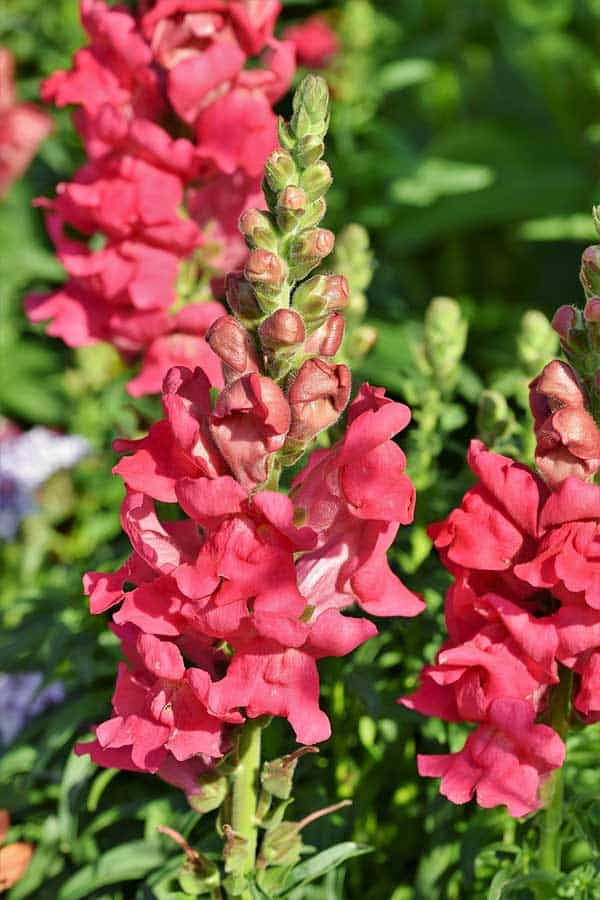
- Hardiness Zone: 7–10 (can be grown as annuals in cooler zones)
- When to Plant: Early spring or late fall in mild climates.
- When They Bloom: Early to mid-spring.
Snapdragons are cool-weather lovers that bloom early and thrive in spring gardens. Start seeds indoors 6–8 weeks before the last frost or use transplants for faster results. Plant them in well-drained soil in a sunny location. Snapdragons germinate in about 10–14 days, and their tall, colorful spikes add vertical interest to garden beds or containers. Regular watering and deadheading encourage continuous blooms through the season.
8. Petunias
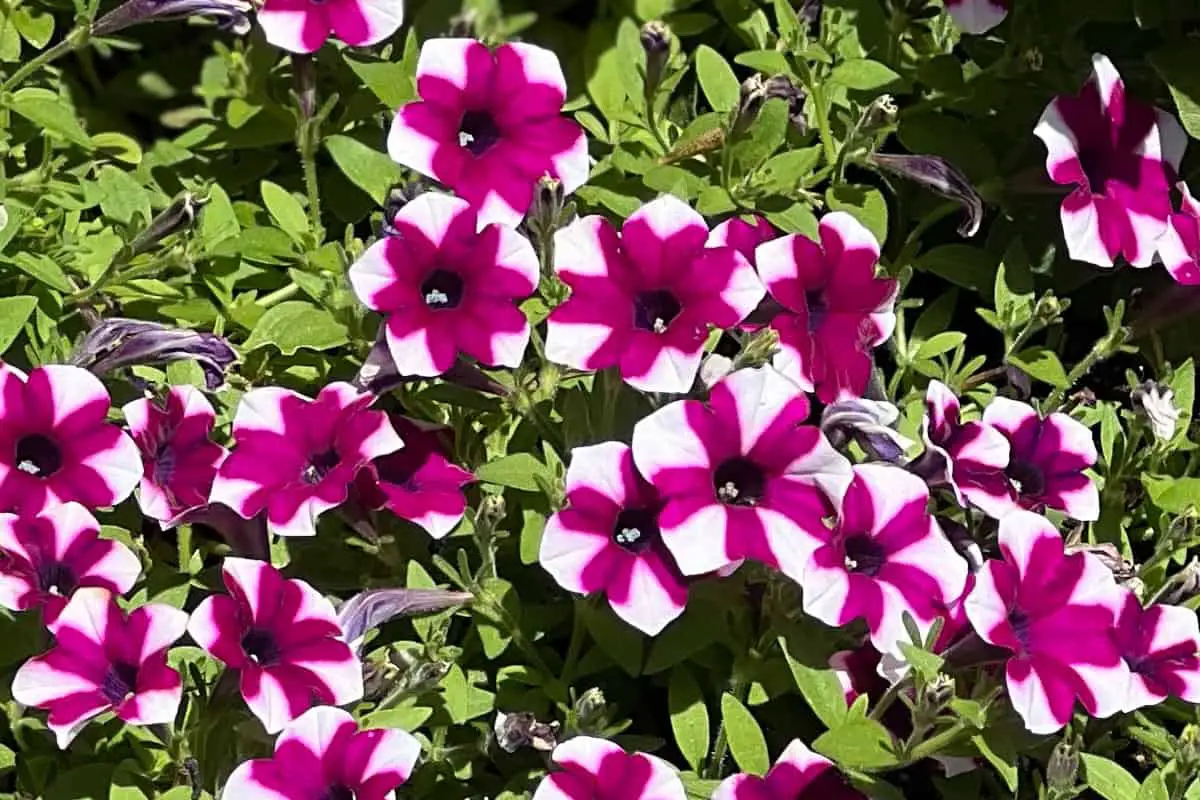
- Hardiness Zone: 9–11 (grown as annuals in most zones)
- When to Plant: After the last frost in early spring.
- When They Bloom: Mid-to-late spring through fall.
Petunias are a versatile choice for flower beds, hanging baskets, or containers. Transplants are the easiest way to get them blooming quickly, but seeds can also be sown indoors 10–12 weeks before the last frost. Plant them in a sunny spot with well-drained soil, spacing transplants about 12 inches apart. Petunias need regular watering and benefit from occasional feeding to keep their blooms vibrant and long-lasting. For the fastest blooms, opt for transplants instead of seeds, as seeds require 10–12 weeks to grow and bloom.
9. Hyacinths
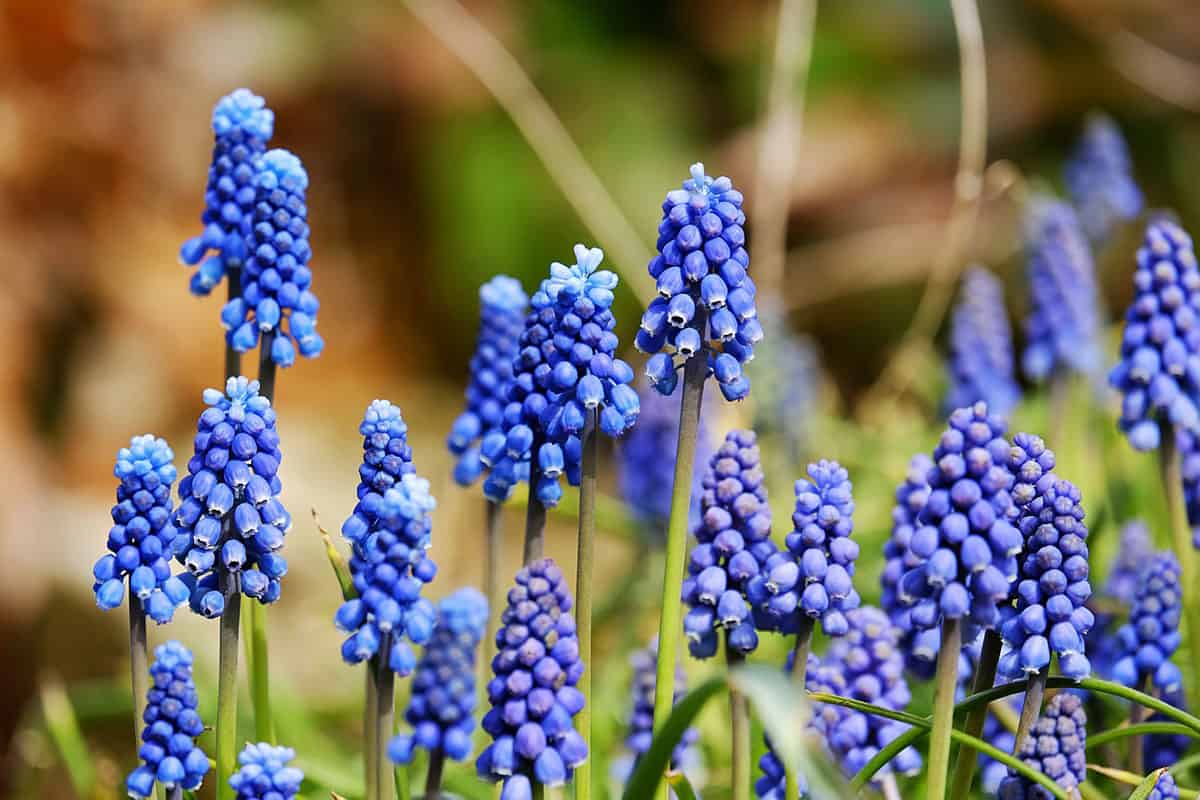
- Hardiness Zone: 3–9
- When to Plant: Fall, 6–8 weeks before the ground freezes.
- When They Bloom: Early to mid-spring.
Hyacinths are prized for their bold colors and fragrant, tightly packed flower clusters. Plant bulbs in the fall, about 4–6 inches deep and spaced 3–6 inches apart, in well-drained soil. Choose a sunny or lightly shaded spot to ensure strong growth. Hyacinths require a chilling period during winter, making them perfect for regions with cold climates. Their low-maintenance nature and early blooms make them an excellent addition to any spring garden.
10. Irises
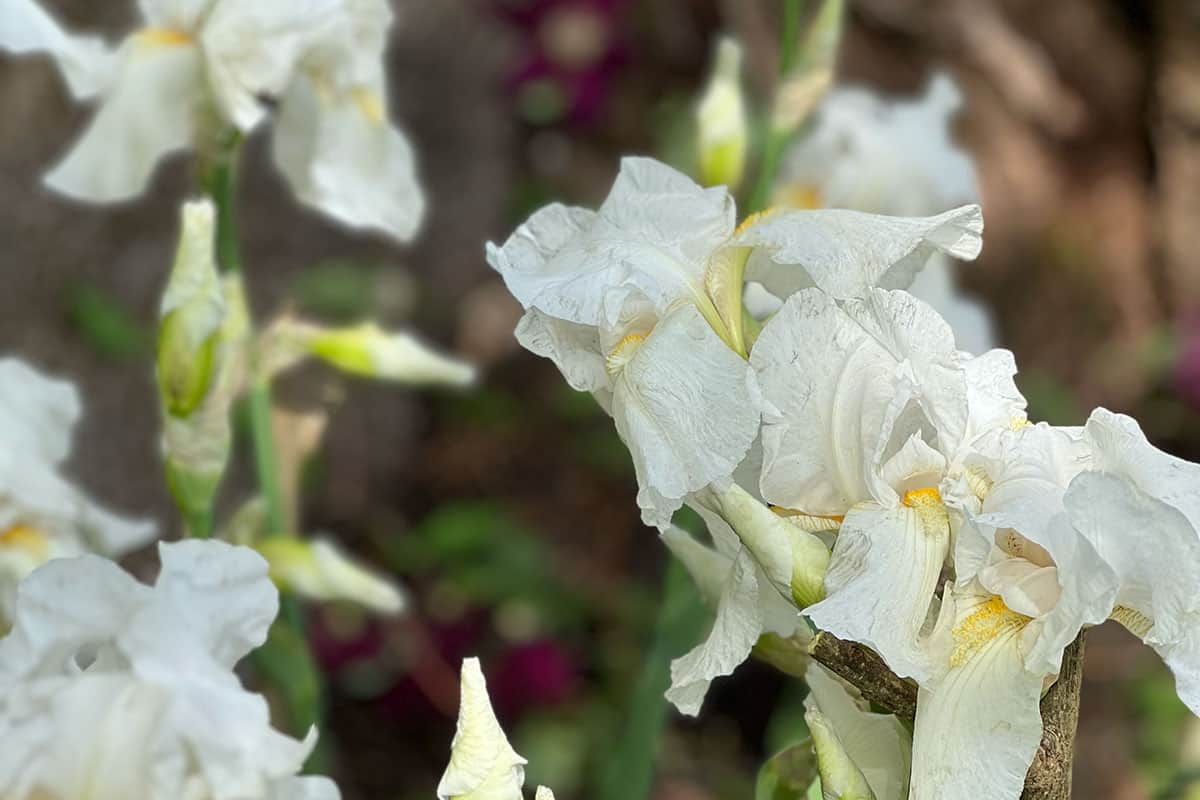
- Hardiness Zone: 3–9
- When to Plant: Early spring or late fall.
- When They Bloom: Mid-to-late spring.
Irises are elegant and hardy flowers that thrive in sunny, well-drained areas. Plant rhizomes in early spring, just below the soil surface, spacing them about 12–18 inches apart. Water them thoroughly after planting, but avoid overwatering as they don’t like soggy soil. Irises bloom in a variety of stunning colors, making them a favorite for adding sophistication to spring gardens. Deadhead spent flowers to encourage healthy growth and prevent overcrowding.
11. Dianthus

- Hardiness Zone: 3–9
- When to Plant: Early spring after the last frost.
- When They Bloom: Early-to-mid spring through summer.
Dianthus, also known as pinks, produces fringed, fragrant blooms that thrive in cooler weather. Start seeds indoors 6–8 weeks before the last frost or plant transplants directly into the garden. Choose a sunny spot with well-drained, slightly alkaline soil. Dianthus blooms best with regular watering, but it’s drought-tolerant once established. Pinching back spent flowers encourages continuous blooming through the season.
12. Forget-me-nots
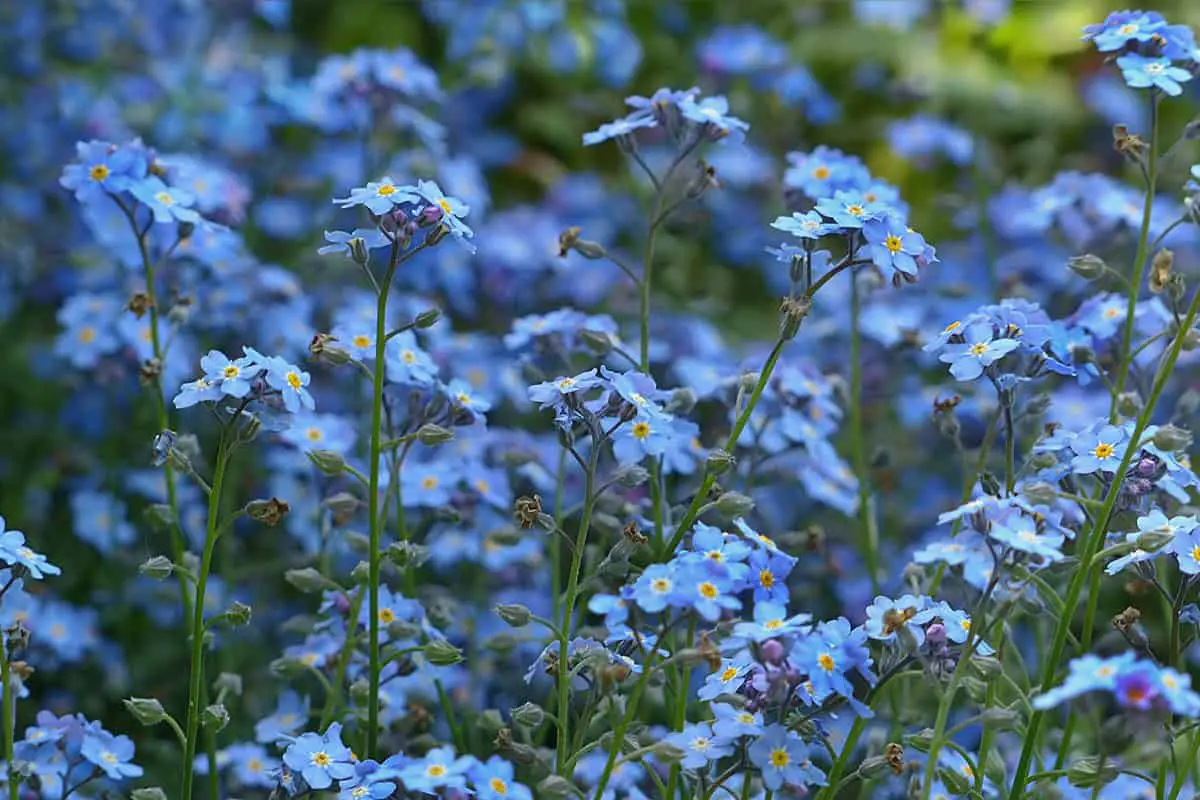
- Hardiness Zone: 3–8
- When to Plant: Early spring or fall for overwintering.
- When They Bloom: Early-to-mid spring.
Forget-me-nots are charming, easy-to-grow flowers that thrive in shady or partially sunny spots. Sow seeds directly into moist soil in early spring, or start them indoors a few weeks earlier. Scatter seeds and lightly press them into the soil; they don’t need covering as they germinate best with light. Forget-me-nots spread easily, forming carpets of tiny blue blooms that return year after year with minimal maintenance.
13. Begonias
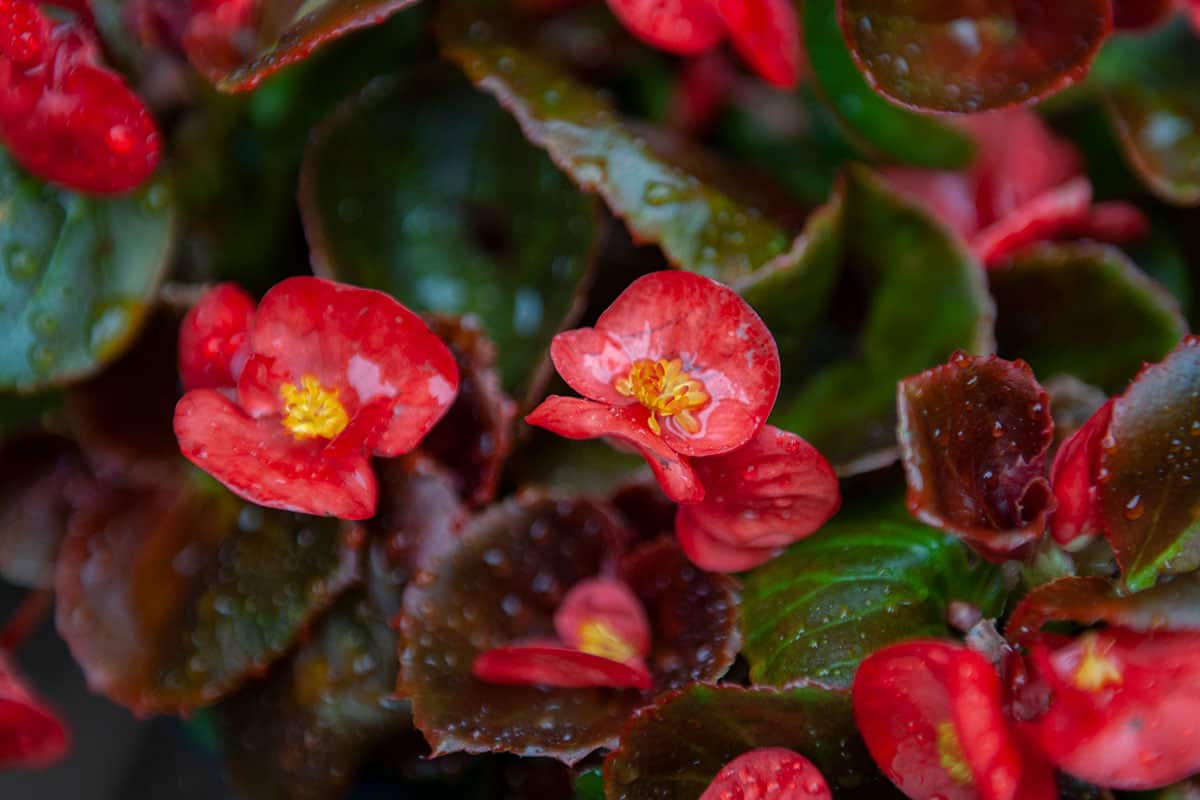
- Hardiness Zone: 10–11 (grown as annuals in most zones)
- When to Plant: After the last frost in spring.
- When They Bloom: Mid-spring through fall.
Begonias are versatile, shade-loving flowers ideal for containers, hanging baskets, or garden beds. Start with transplants for quicker blooms and plant them in well-drained, slightly moist soil. Space them about 8–12 inches apart in partial to full shade. Begonias require consistent watering but should not sit in waterlogged soil. They bloom continuously throughout the season, making them a reliable choice for vibrant color.
14. Calendula
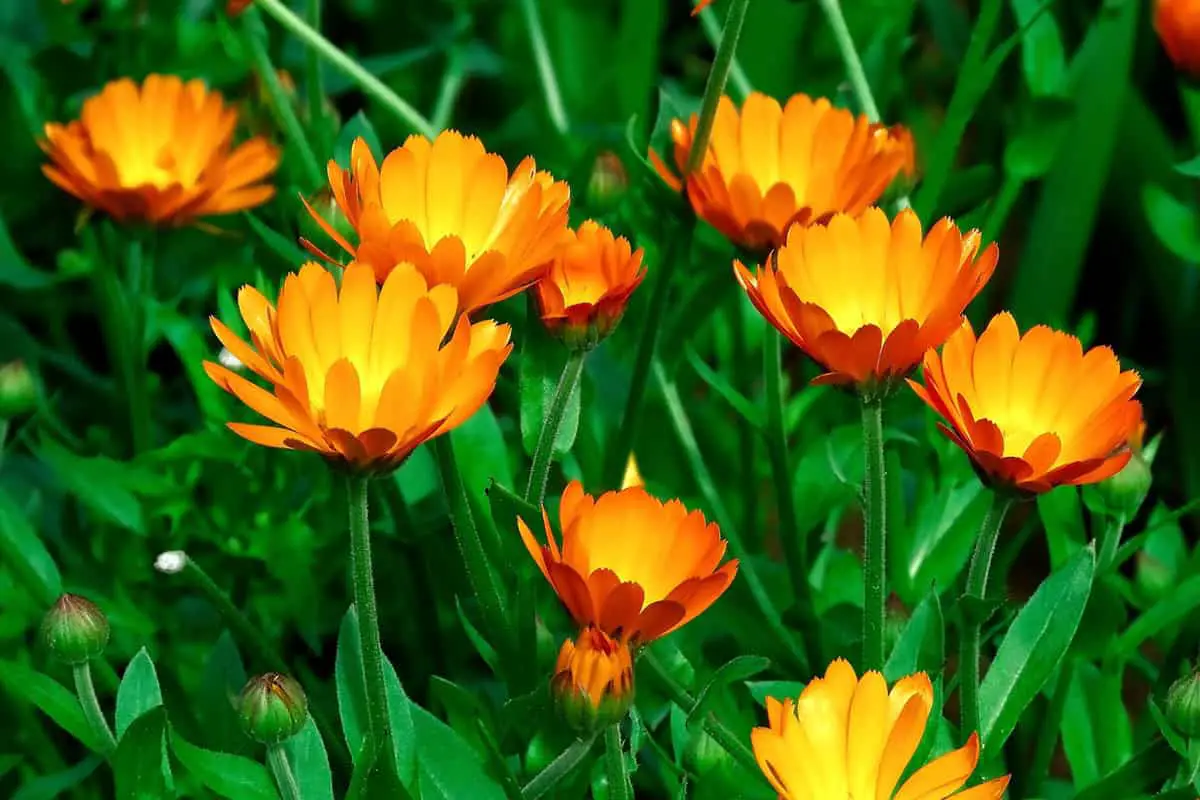
- Hardiness Zone: 2–11
- When to Plant: Early spring as soon as the soil can be worked.
- When They Bloom: Early-to-mid spring through summer.
Calendula, also known as pot marigold, is a cool-weather flower that thrives in garden beds or containers. Sow seeds directly into well-drained soil and lightly cover them with about ¼ inch of soil. They germinate in 5–7 days and grow quickly, producing cheerful yellow and orange blooms. Calendula thrives in full sun but tolerates partial shade, making it a versatile choice for spring gardens. Calendula thrives best in cooler spring temperatures and may struggle in warmer climates once the heat sets in.

